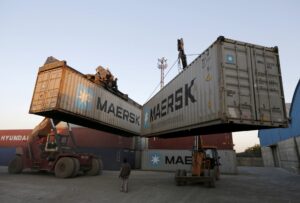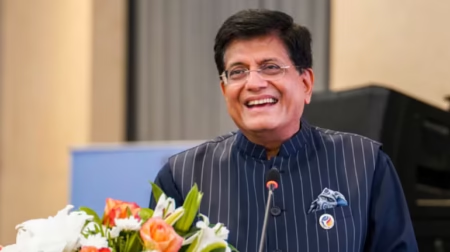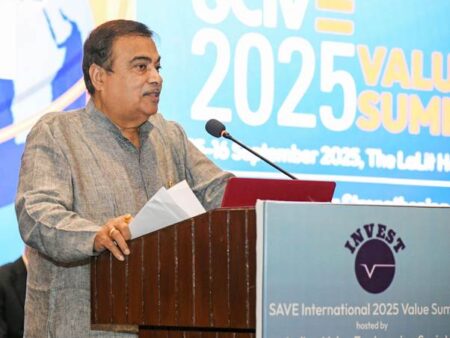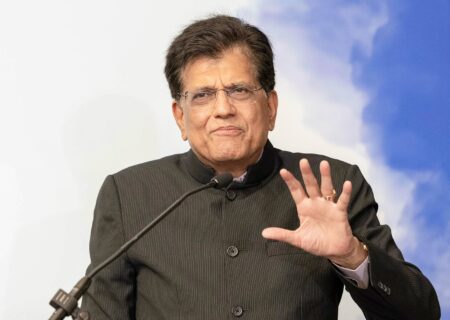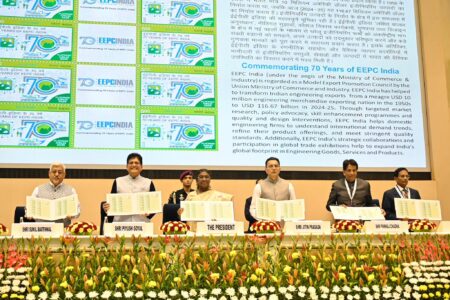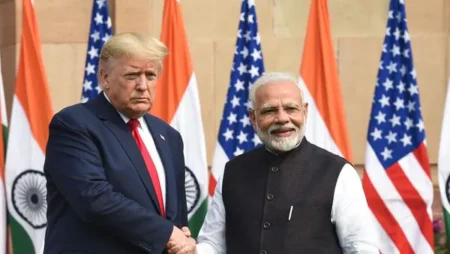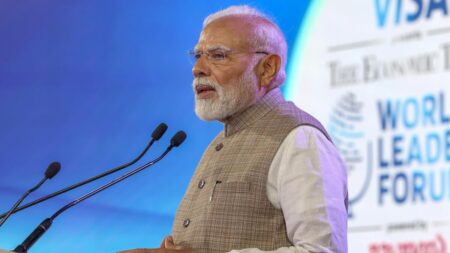The Indian fashion and garment industry is undergoing transformative growth, driven by key government initiatives. In this government insights piece, we explore how schemes like PM MITRA Parks, the PLI Scheme, and the National Logistics Policy are shaping the sector’s future by enhancing infrastructure, boosting competitiveness, and streamlining logistics.
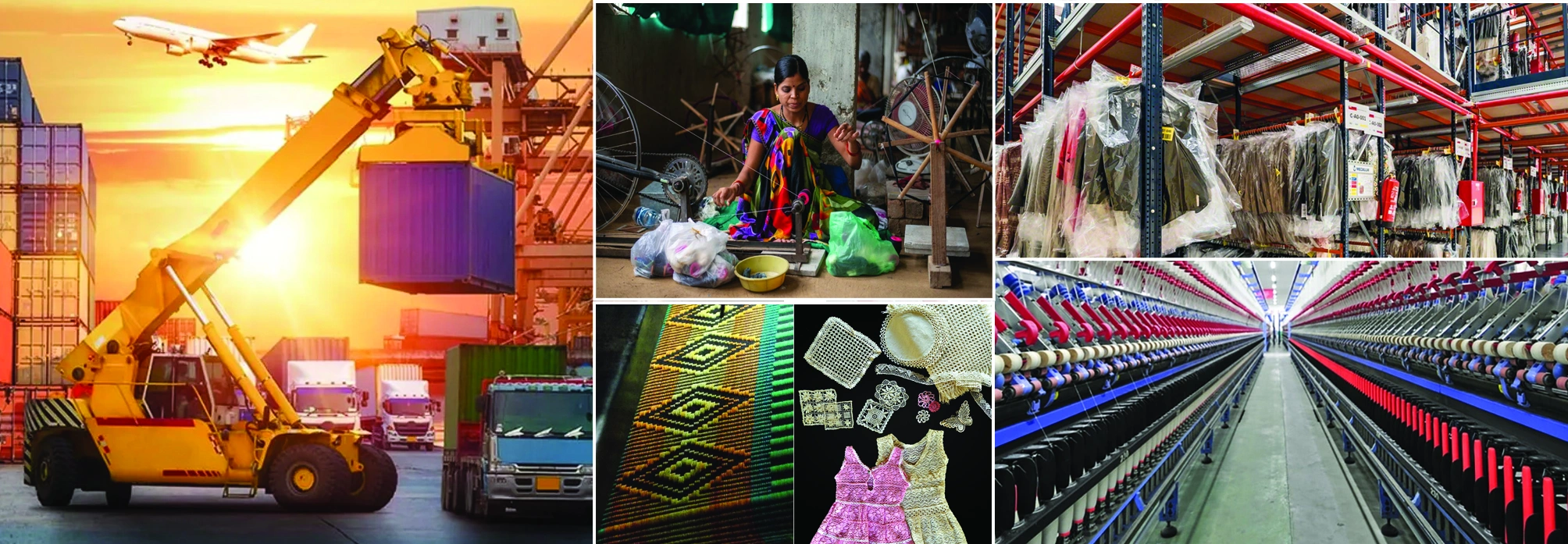
The Government of India has introduced transformative initiatives to enhance logistics infrastructure, including the National Logistics Policy, PM Gati Shakti National Master Plan, Bharatmala, and Sagarmala projects. These initiatives aim to address inefficiencies in multi-modal connectivity and last-mile delivery with the goal of reducing logistics costs, which currently represent 13–14% of GDP. By improving infrastructure and streamlining transportation processes, the government seeks to lower logistics costs to single digits, thereby saving time and resources for manufacturers. These policies broadly target the logistics sector to boost overall efficiency and effectiveness in transportation and logistics management.
- Eligibility Criteria: These initiatives are not industry-specific but broadly target the logistics sector to benefit all related industries, including manufacturing and retail.
- Benefits: The focus is on reducing logistics costs by improving infrastructure, addressing transport-related challenges, and enhancing last-mile connectivity. The aim is to create a more streamlined and cost-effective logistics network that supports economic growth and competitiveness.
- Challenges: Despite these advancements, the apparel industry continues to face challenges due to a fragmented logistics system. Issues include difficulties in integrating back-end processes and adapting to rapidly changing fashion trends.
Implementation and progress
- National Logistics Policy:
The National Logistics Policy is enhancing logistics efficiency through reducing transportation costs, improving infrastructure, and streamlining customs procedures. Recent updates include new logistics hubs and modernised transportation networks. - PM Gati Shakti National Master Plan:
Numerous infrastructure projects have been initiated or accelerated under PM Gati Shakti, focussing on various transport sectors. Railways have seen the expansion of rail networks, the modernisation of existing lines, and the development of dedicated freight corridors. Roadways are being enhanced with the construction of new highways, expressways, and road networks. Airports are undergoing expansion and modernisation to improve air connectivity. Ports are being developed and expanded to boost maritime trade. Additionally, inland waterways are being improved for more efficient transportation of goods.
PM Mega-Integrated Textile Regions and Apparel (PM MITRA) Parks

The PM MITRA Parks initiative aims to establish world-class industrial infrastructure, and the government has approved setting up seven PM Mega Integrated Textile Region and Apparel (PM MITRA) Parks in Greenfield and Brownfield sites with world-class infrastructure, including plug-and-play facilities, with an outlay of Rs. 4,445 crores for a period of seven years up to 2027–28. The government has finalised seven sites, viz., Tamil Nadu (Virudhnagar), Telangana (Warangal), Gujarat (Navsari), Karnataka (Kalaburagi), Madhya Pradesh (Dhar), Uttar Pradesh (Lucknow), and Maharashtra (Amravati), for the setting up of PM MITRA Parks. These parks are designed to create an integrated textile value chain, from raw material processing to garment manufacturing, thereby reducing logistics costs and enhancing efficiency. The initiative seeks to attract both foreign and local investment, promote job creation, and foster innovation, with financial support of up to ₹500 crore per park. Expected to generate around ₹70,000 crores in investment and create 20 lakh jobs, the initiative faces challenges in effective coordination and securing large-scale investments.
- Eligibility Criteria: State governments must provide 1,000 acres of contiguous, encumbrance-free land. Selected sites are evaluated based on criteria like connectivity, existing infrastructure, and ecosystem support.
- Benefits: These parks are designed to create integrated textile value chains, attract foreign direct investment (FDI), and generate significant employment. Each park will receive financial support of up to ₹500 crore for development and ₹300 crore in incentives.
- Challenges: Ensuring effective coordination between the centre and state governments, achieving economies of scale, and encouraging innovation in the textile sector are key hurdles.
- Implementation and Progress: Special Purpose Vehicles (SPVs) have been established for all five Greenfield PM MITRA Parks in Gujarat, Tamil Nadu, Karnataka, Madhya Pradesh, and Uttar Pradesh. For brownfield sites in Maharashtra and Telangana, existing implementation arrangements remain in place. Several PM MITRA Parks are nearing completion or are already operational. The government is actively attracting investments and promoting domestic manufacturing within these parks.
Production-Linked Incentive (PLI) Scheme for Textiles
The Production-Linked Incentive (PLI) Scheme for Textiles is designed to enhance India’s manufacturing and export capabilities, focussing on man-made fibre (MMF) apparel, fabrics, and technical textiles. With an allocation of ₹10,683 crores over five years, the scheme offers financial incentives to companies investing at least ₹100 crores and achieving a minimum turnover of ₹200 crores in eligible products. Aimed at strengthening global competitiveness, fostering technological advancements, and creating employment opportunities, the scheme has been extended to provide ongoing financial support. Recent discussions suggest potential expansion to include additional segments of the textile and apparel industry, continuing to encourage domestic production, reduce imports, and promote exports. Despite these benefits, companies may face challenges in meeting investment and turnover requirements, adhering to guidelines, and managing global market competition.
- Eligibility Criteria: Applicants must invest at least ₹100 crore in plant and machinery (excluding land and administrative costs) and achieve a minimum turnover of ₹200 crore from the specified products. Companies must be registered under the Companies Act, 2013.
- Benefits: The scheme aims to enhance the competitiveness of Indian textiles globally by providing financial incentives, fostering growth, and supporting advanced manufacturing technologies.
- Challenges: Participants may face challenges in meeting investment and turnover requirements, navigating complex compliance processes, managing competition, and adapting to market demand fluctuations.
- Implementation and progress: The Production-Linked Incentive (PLI) Scheme in India has made notable progress, covering 14 sectors including electronics, pharmaceuticals, textiles, and food processing, with a financial outlay of approximately ₹1.97 lakh crore ($26 billion). Revised in FY 2023–24, the scheme now includes labour-intensive sectors like textiles, leather, and footwear to boost employment and economic growth. Recent developments show 115 companies applied, with 85 approved—18 under the Champion OEM Incentive scheme and 67 under the Component Champion Incentive scheme. The scheme has attracted ₹67,690 crore in proposed investments, surpassing its target, and includes international companies from countries like Korea, the USA, and Japan.
(The information is based on sources like the Ministry of Textiles, DPIIT, PIB, and news outlets, but may have discrepancies.)



